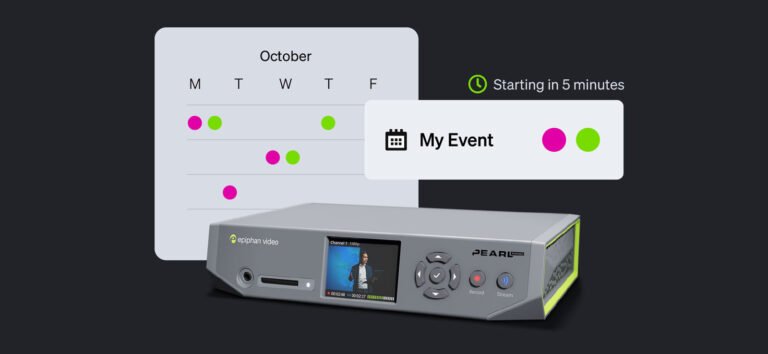Many people are now trying their hand at video production. They may be creating videos for their website or their social media pages, or they might be live-streaming. Before doing so, they must ensure they have the correct equipment.
Most people are aware that they need a camera, microphone, and lighting to ensure they can be clearly seen in these videos. They may also recognize they need some accessories, but many people don’t realize that an entry-level video encoder will likely be required. What essential gear should a person invest in to begin creating these videos today?
Which Equipment to Buy?
Before making their first purchase, a person must know which type of content they plan to create and whether they will primarily be filming indoors or outside. They need to establish a budget for these purchases to avoid overspending. Furthermore, they must determine which items are essential and start there. Purchasing too much equipment initially can leave them feeling overwhelmed and questioning why they undertook this task.
Cameras
Individuals new to video production benefit from investing in multiple cameras. Smartphone cameras are a good place to start, but they won’t provide the highest quality. If using a smartphone, use the rear camera, as it offers better quality. Shoot in landscape mode if the goal is to provide traditional video content. Entry-level cameras are also an excellent option for beginners. Choose one that offers reliable autofocus and an external microphone output. Consider the battery life when making this purchase, as nobody wants to run out of battery midway through a production.
Audio Equipment
Viewers must be able to hear what is being said. If the audio quality is mediocre, viewers are less likely to watch the video through to the end. The human brain is susceptible to any audio issues. Echoes or a tinny sound would quickly become frustrating. Invest in decent audio equipment to avoid these issues. Many individuals new to video production prefer a clip-on microphone for live shots. If they are doing a voiceover or stationary recording, a USB microphone might be sufficient. Eliminate background noise and record in a room with soft furnishings to minimize echoes. Furthermore, test the audio before each production to ensure it works correctly.
Lighting
Many people are aware that video production often utilizes natural light, which can be a mistake. If using natural light, record on a cloudy day when there will be diffused lighting. However, it is best to invest in lighting solutions for any video production. A key light will be the primary light source. Position this at a 45° angle to the subject. Fill light is then used to minimize shadows and should be positioned opposite the key light.
Additional Items
Purchase a tripod to prevent the camera from moving. Nobody wants to watch a shaky video. Other devices are also available, such as gimbals or smartphone grips, and one might be a better option, so it’s best to research them all.
Consider investing in extra batteries and chargers so the camera never runs out of power midway through a recording. SD camera cards are beneficial for those who will be shooting extended footage, and a basic reflector helps create shadows on a subject’s face. A lens cleaning kit and microphone windscreen are also beneficial for those new to video production.
However, none of this will be helpful if the individual does not have a video encoder. This device converts the video input into a digital format, allowing it to be shared on various players and mobile devices. If a video converter encoder is not available, the images will be saved individually rather than as a fluid video. With this device, any video production can be shared quickly and easily, which is why it was created in the first place.

